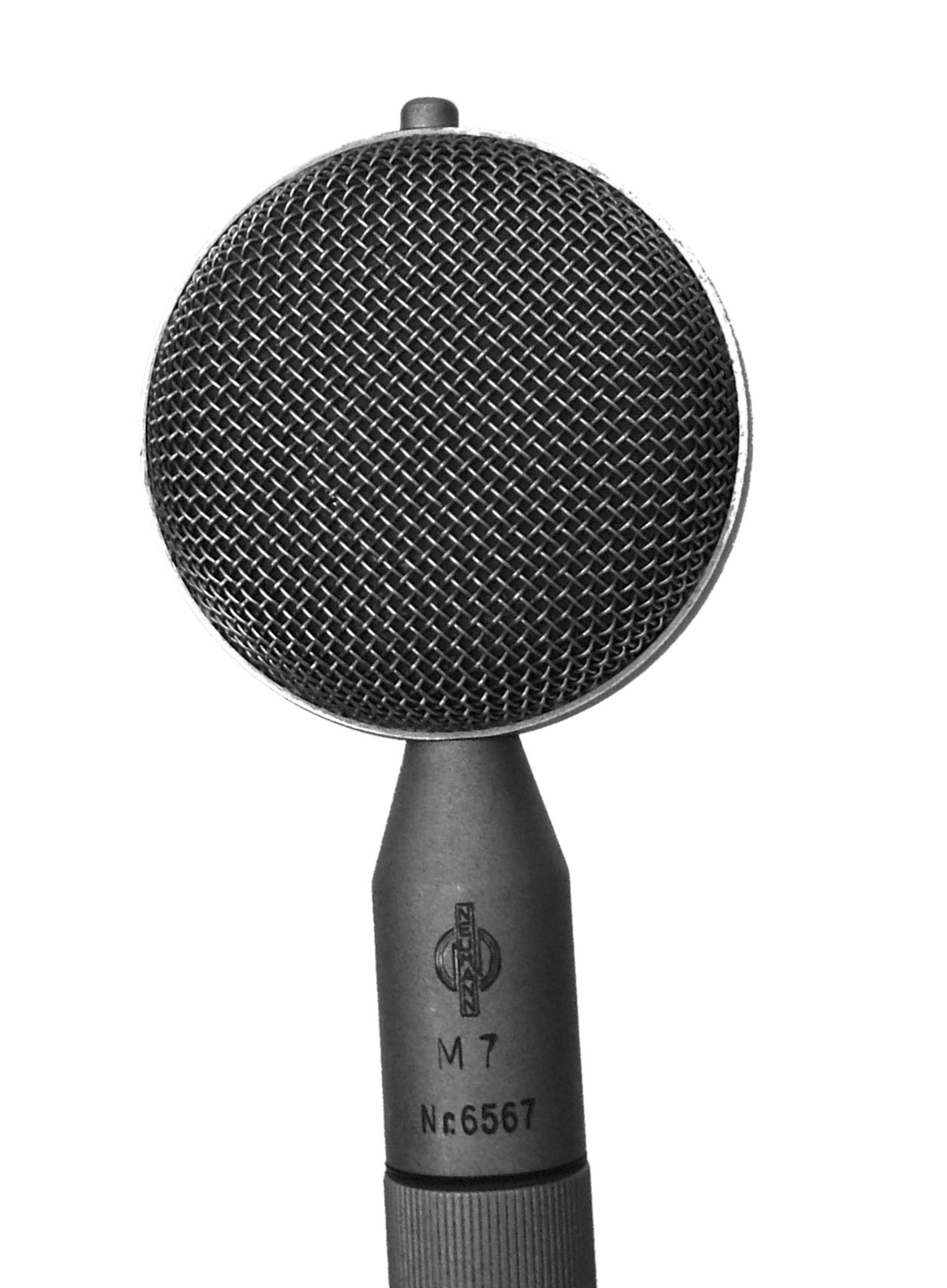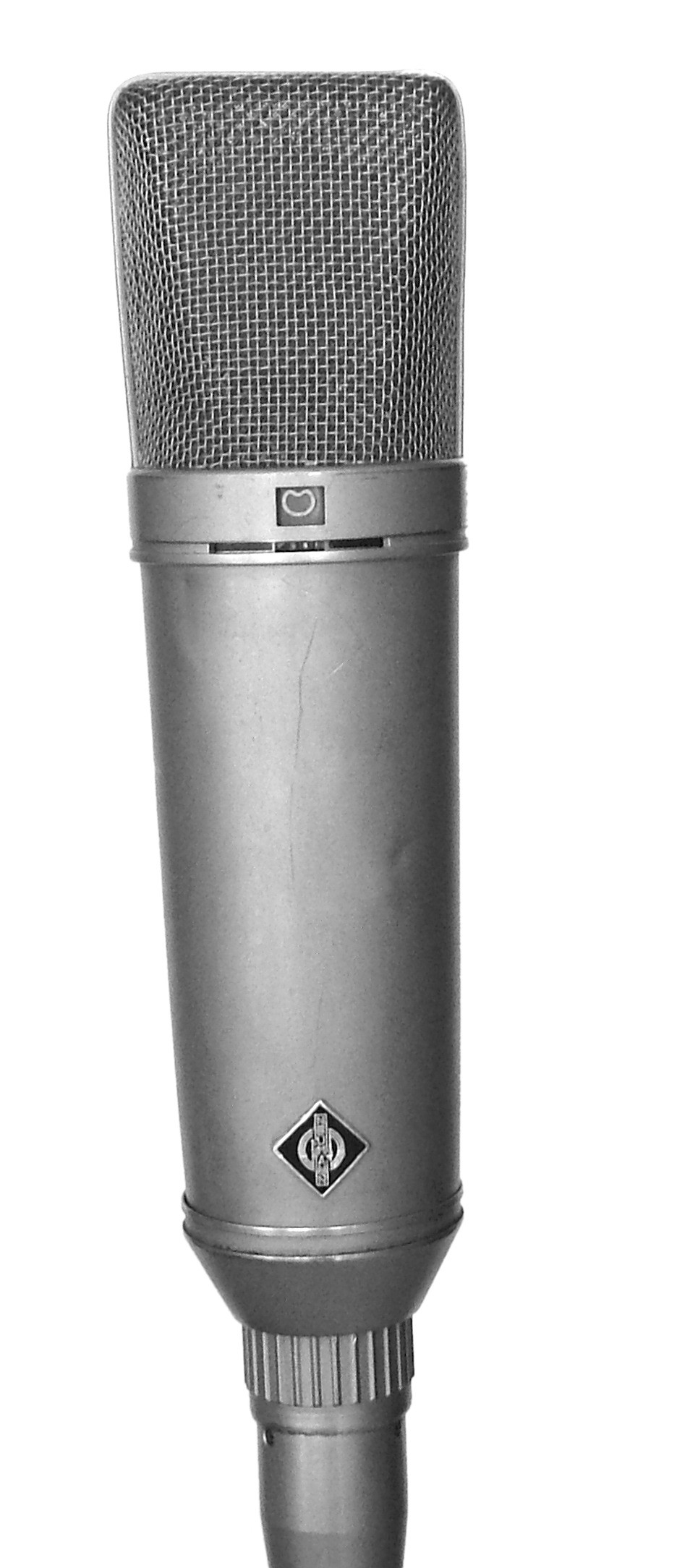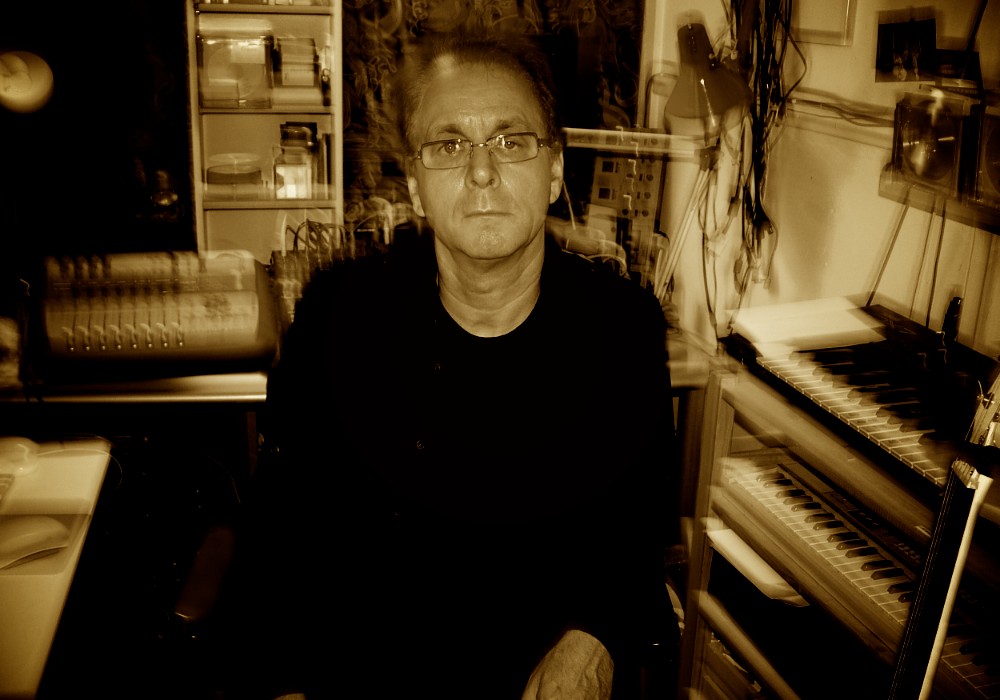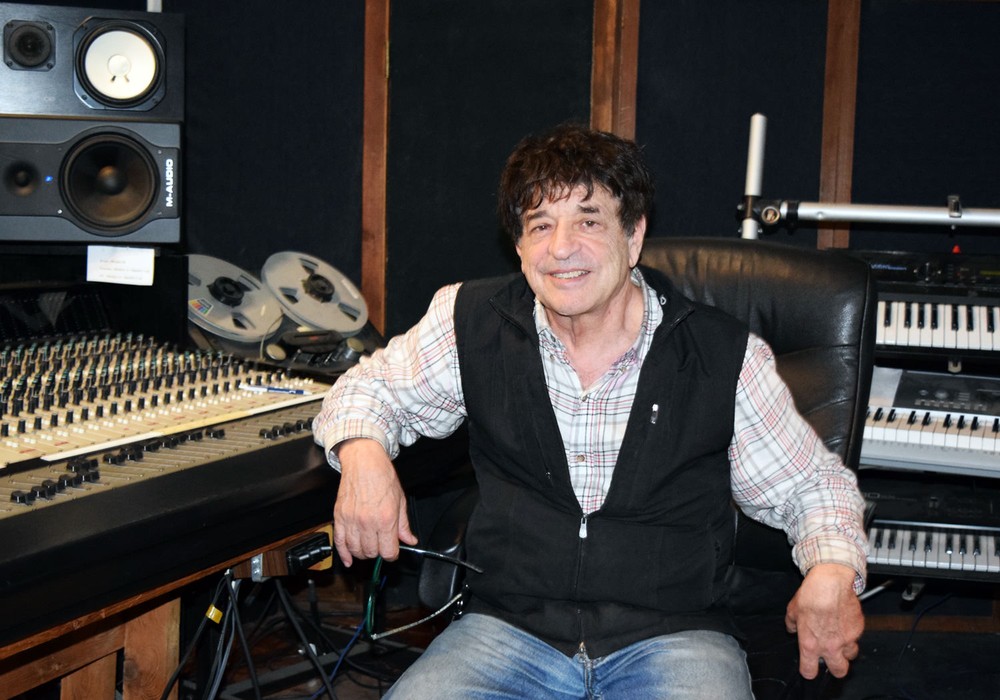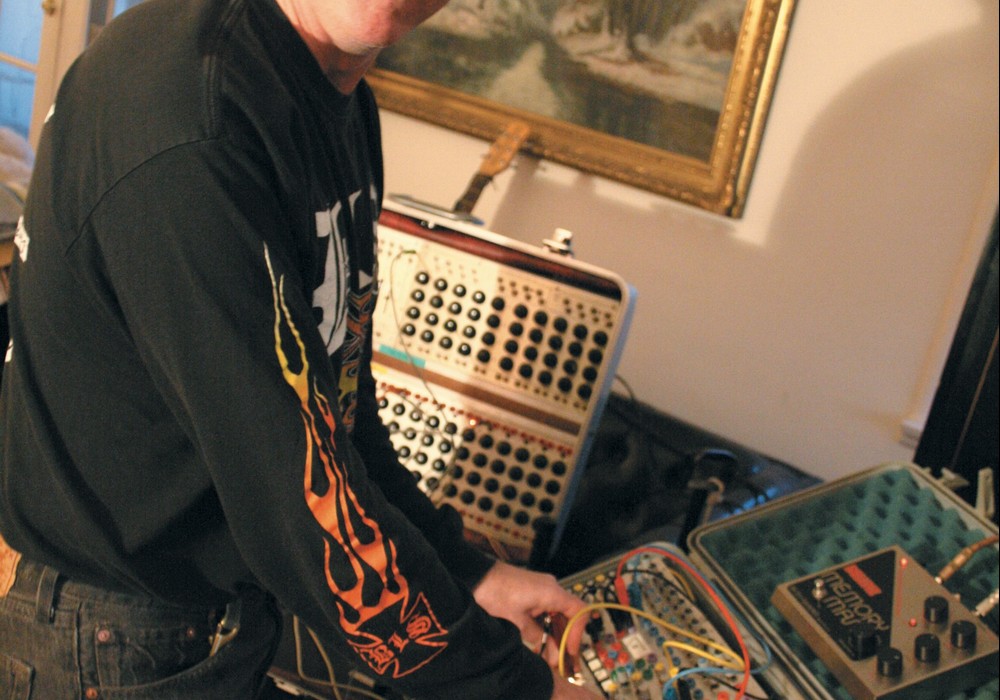A microphone is a very unique audio tool in that it is a mix of mechanical and electrical components. No other audio product, save loudspeakers, has such a critical combination of different scientific disciplines. A microphone is the sum of its parts, and we'll look at those parts separately to understand the workings of the whole. To keep this discussion efficient, we'll focus on condenser mics and avoid measurement mics, ribbons, dynamics or a detailed evolution of these devices. This focus of this discussion is large diaphragm vintage condenser microphones. We'll also avoid getting too deep into measurement statistics, etc.
It may surprise you to learn that despite the proliferation of "large diaphragm" condenser microphones over the past few years, there is still only one type of capsule that finds its way into the bulk of these microphones. Whether they are low cost Chinese mics or moderately expensive US or European brands, the same basic capsule design can be found behind the grille under hundreds of brand names. This can be misleading to the end user as many brands claim sonic virtues that are found only in a capsule design different from the one they are using!
Construction:
A condenser or capacitor microphone is basically a stretched conductive membrane suspended above a fixed conductive plate. This membrane and backplate ("the capsule") are the two key components that define the mic as a "condenser". Variations in air pressure move the membrane closer or farther from a backplate, which varies the voltage across it, which is in turn converted to electrical audio. This is the major electromechanical contributor to the sound of the mic, as it is where acoustic energy is converted to electrical energy. This now electrical audio is amplified by an amplifier inside the mic which raises the electrical level of signal high enough and noiselessly enough to be sent to the mic preamplifier, another piece of gear required before it reaches line level and can be mixed or modified with signal processing. It is important to note that all three components — membrane, backplate and electrical amplifier — have a profound effect on the sound of a microphone, but our focus here today will be on the capsule assembly as a whole, the specific construction of which will determine on and off axis frequency response, frequency dependent transition of on to off axis response, proximity effect (PE) (the dramatic rise in bass response as you get closer to the capsule), gain, signal to noise and any common resonances or modal behavior present in all directional characteristics of operation.
Capsule basics:
There are two basic topologies: single membrane/single backplate (capable of omni and cardioid only) and dual membrane types (capable of all directional patterns).
Single Membrane Design Overview:
Since the vibrating membrane is subject to modal vibration and resonance, which will limit the audio bandwidth and mask the desired audio, the fixed conductive plate (backplate) behind the membrane can be modified to compensate for these unwanted resonances or vibration modes. Typically a variety of blind holes (not drilled all the way through) and slots dampen and control the resonance. There will also be combinations of "through holes" which are used to adjust the delay time between sound arriving from the rear towards the front of the membrane, giving the entire mic assembly directional (or not) characteristics. The rear entry of sound through the plate to the membrane enables cancellation of portions of the sound from the front, enabling "tuning" or other sonic manipulations that adjust the characteristics of the PE. Every aspect of membrane/backplate assembly affects the sound, and in practice the dimensions of the parts requires watchmaker's precision. The thickness of this backplate determines the cardioid delay time, which also affects the directionality, and the membrane tension determines in-band resonance.
Dual Membrane Design Overview:
Microphones with front and rear membranes are designed to be directional or variably directional and have backplates that are constructed in one of two ways: single or dual, with the dual backplates having some chamber separating them. This chamber places the resonance of all dual backplate/dual membrane designs higher than all single backplate/dual membrane designs. It also affects sensitivity (generally increasing it) and high frequency directionality, as well as the slope and height of the "Proximity Effect" (PE) when in cardioid or figure eight. The starting point of this bass increase, the slope, the shape and magnitude of the PE will be determined by a combination of backplate construction and membrane resonance. There are literally millions of combinations of these three elements available. This is a critical area of difference for determining why the three basic capsule types don't behave the same, even if the salesman told you they do! To make things even more complex, most manufacturers measure frequency effects of their design, but few measure time domain effects of a resonance: The resonance has a slope, a rise and fall (with frequency) of its own. This can be likened to transient response, also a time domain issue.
There are three widely popular capsules:
KK47 (variant of M7) single backplate, dual membrane
CK12 dual backplate, dual membrane
KK67 (variant of CK12) dual backplate, dual membrane
ROUGH LINEAGE : M7 evolved into the KK47 CK12 evolved into the KK67 (though not by the same people!)
Capsule Design Detail:
KK47: [single backplate/dual membrane] The most common capsule type is the KK47. It has a relatively low resonant freq, distinguished by its low mid signature, good PE and lack of high frequency (HF) peak. It is a 1" diameter membrane that is metalized (conductive) to a diameter of 0.9" and has a center electrode fixing the membrane in the center (a key design feature that is easy to spot). It has a more complex and higher pitched resonance than membranes not fixed in the center (measurement mics, CK12), and a higher low frequency (LF) cutoff frequency. This is what contributes to its "bass signature" and its unique PE slope. It and its basic variants can be found in (vintage) Neumann U47, U48, M49 and U47fets. I know of no Chinese variants of this capsule as of this date. The M7 actually preceded the KK47, but is actually less common today due to its complex production requirements. The M7 has all the attributes of the KK47 but with some improved HF response due to its slightly smaller overall diameter. The M7 will be found in the oldest vintage Neumann U47/48, M49 and vintage Geffel CMV 563 and UM57. Here again, I know of no Chinese variants of the M7 capsule.
CK12 [dual membrane/dual backplate] In 1951 AKG developed this completely new type of complex backplate, which on the surface more closely resembles measurement mic capsules than previous KK47 or M7 capsules due to its lack of center electrode on the membrane. It is a 1" membrane that is fully metalized. This freely vibrating membrane will have a lower LF cutoff than any center fixed membrane like the KK47 or KK67, but the tradeoff is that it is more "pop" and rumble sensitive. The CK12 also has a unique system of dual, asymmetrical, separated resonant backplates (each backplate is itself a resonant chamber), which is what gives it a very flat midrange and 10-12 kHz peak. It is found in (vintage) AKG C12, C12a, C24, 412, 414, as well as the AKG- manufactured and Telefunken-distributed ELA M250 and ELA M251.
KK67 Similar to the dual backplate/dual membrane C12 design but retained Neumann's center electrode membrane attachment, which changes the LF cutoff (raises it) and changes the PE droop. The dual, symmetrical, backplates of this capsule are solid brass (not resonant chambers as the CK12) and thus its HF peak is different (narrower and higher). This capsule's membrane is 1" diameter, which is metalized to 0.9". It capsule has a distinctive midrange signature that's higher than the KK47, is aggressive in the mids, typically peaking @5k, and has a HF peak @12-13 kHz. This capsule and its variants are probably the world's most widely copied large diaphragm capsule type, and exist in far more Chinese re-branded mics than I could possibly keep track of. It originally appeared in the vintage Neumann U67 and soon thereafter in the vintage Neumann U87.
So how come a CK12 can't sound like a KK67 and vice versa, and a CK12 or KK67 can't sound like KK47 or M7, even when I think they sound similar? different LF cutoffs different PE characteristics different HF peaks different time domain responses (at different frequencies) different acoustic influence (headgrille, mechanical coupling) different amplifiers (you're gonna have to listen to the capsule somehow!)
There are normally individual device variations which will influence the exact measurement of PE and HF peaks, but the above chart may be used for general "rule of thumb" assertions that hold true for a given model of mic, assuming it's in good working condition.
So now that you can see what is at the heart of your favorite mic hopefully some of the sonic characteristics and commonalities may start to become more apparent, and your ability to pick the mic you want to achieve a desired sound should be easier.
A note about diaphragm thickness: All of the above classic designs were discussed in the context of the original diaphragm thicknesses. "But what about thinner diaphragm material?" I would consider the above-discussed topics to be far more important to a user's inquiry into why they like a mic than a discussion of membrane thicknesses, since the backplate structure most critically affects sensitivity, polar response, and PE in a more significant way than membrane thickness does. Though it has been proven that thinner diaphragm material can extend the very top of the frequency range of a large diaphragm capsule, and reduce the Q (width) of the HF resonant peak (especially in center electrode capsules like the KK47 and KK67), it always does this at the expense of adding upper midrange as well.


